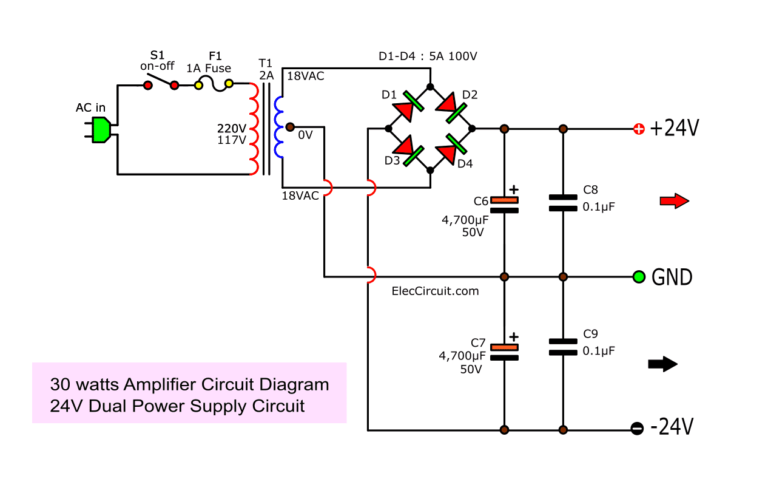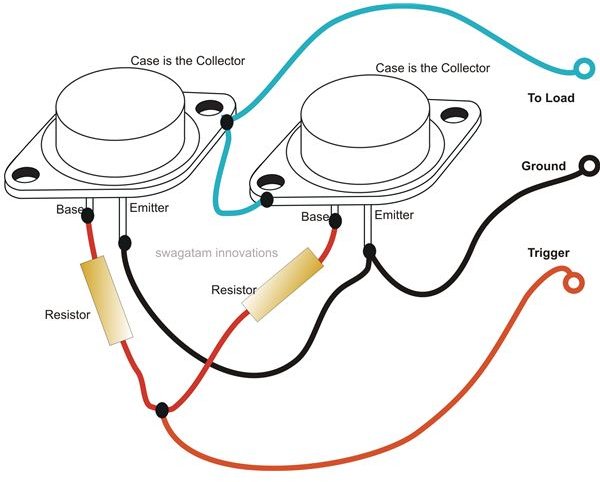
Learn: variable voltage regulator with 2N3055 transistor 38V Power Supply Using 2N3055

So, for this reason, we should keep it cold with an effective heat sink. And it will result in enormous heating problems. The whole input voltage will be dropped across the power transistor. The VEC is 20V-5V = 15V So, the wattage is 15 watts. It needs to dissipate wattage is 7V x 1A = 7W. The voltage across the transistor (VCE)is 20V -12V = 7V. It needs to dissipate wattage is 5V x 1A = 5W. The voltage across the transistor (VCE) is 20V -15V = 5V. It is effectively a dropper resistor and must dissipate heat according to ohms law. The transistor of C is dropping the most voltage. At 1A the current.ĭo you know which transistor has the most heat loss? Or… It must dissipate or reduce it.ĭo you see an image? It is simple. The transistor-Q1 works look like a resistor.
#2N3055 PASS TRANSISTOR SCHEMATIC SERIES#
In this series pass transistor regulator. Of course, energy will be expressed by heat. It should reduce the loss of energy in the circuit to a minimum. The transistor- 2N3055 can power load current up to 2A. The circuit will induct them into the transient noise. The power supply has a stray magnetic field. R1 increases the stability of the load circuit.C3 is a 0.047uF decoupler capacitor to filter out the transient noise.C2 keeps the reference voltage to be stable better.C1 is a smoothing capacitor at an input.Thus, it has a much more stabilized output. The advantage of this circuit, we can use a tiny current to Zener diode and base of a transistor. Because the voltage of Base-emitter less, transistor Q1 works less too. So it keeps the output voltage to be a constant level. But the base-emitter voltage rises up, transistor Q1 works more.

In general, the output voltage is low down. In the circuit, the transistor has a proper gain and changing of VBE help it.

Since it is a power supply that regulates a certain power output. The output voltage is scheduled using the voltage divider (1K/560) to ensure that 1.7 volts can be ascribed to the 3904 base once the output is 5 volts.This voltage is still suitable for many loads using the 12V supply such as receiver radios. This exact same current runs via the emitter resistor of the 2N3904 which will create around a 1 volt drop over the 62 ohm resistor as well as 1.7 volts on the base. The LM317 constantly works using a voltage variation of 1.2 between the output and adjustment terminals and demands a minimal load of 10mA, hence a 75 ohm resistor has been picked that will probably bring (1.2/75 = 16mA). The LM317 will supply more than 1 amp of current to push the bases of the external power transistors and with an approximate gain of TEN the combo ought to provide 15 amps or even more. The LM317 takes a few added volts on the input side, as well the emitter/base drop from the 3055s, and also no matter what is shed along the (0.1 ohm) equalling resistors (1volt at 10 amps), therefore a different transformer and rectifier/filter circuit is employed which adds some volts more than the output voltage. To get decent efficiency the voltage with the collectors of the a pair of parallel 2N3055 pass transistors needs to be near to the output voltage.


 0 kommentar(er)
0 kommentar(er)
